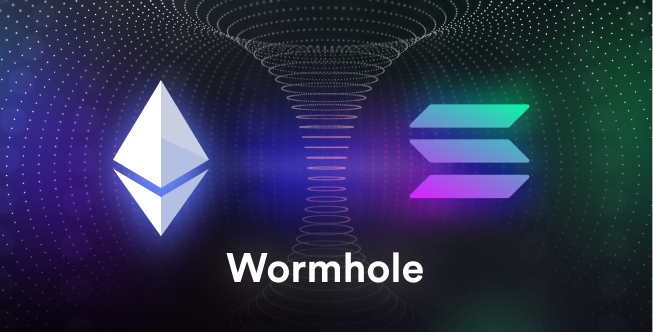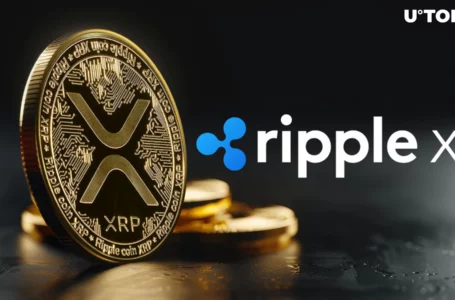
What is Wormhole?
Wormhole is a decentralized, universal message-passing protocol that connects to multiple blockchains. In simple terms Wormhole allows different blockchains like Ethereum, Binance Smart Chain, Terra, Solana, Polygon, Avalanche and Oasis to communicate with each other. It addresses two of the main problems that plague blockchains today:
- Tokens are hard to move between blockchains without relying on centralized exchanges for bridging and swapping tokens. However, this means users are subject to counterparty risk.
- Decentralized applications (DApps) and smart contracts on different blockchains cannot communicate with each other, making interoperability between chains difficult to achieve.
Wormhole solves this by monitoring several chains for messages emitted by smart contracts on those chains. This is achieved through the Wormhole Core Layer, a core contract deployed on each chain that routs the received messages to the target chain, the core function of the previously mentioned universal message-passing protocol. A guardian network consisting of 19 nodes secures Wormhole.
This system enables cross-chain communication protocols like token and NFT bridges, cross-chain oracles and other messaging applications that would not operate without Wormhole’s infrastructure.
How Does Wormhole Work?
Wormhole Token Bridge
The most significant and well-known feature of Wormhole — albeit not the only one — is the WormholeTokenBridge. It enables the trustless and permissionless transfer of crypto assets between layer-one blockchains like:
- Solana
- Ethereum
- Binance Smart Chain (BSC)
- Polygon
- Terra
- Avalanche
- Oasis
Secured by Guardians — Validator Nodes
Token transfers are secured by the previously mentioned guardians, a set of hand-picked validator nodes monitoring activity on the chains. Some of the biggest staking providers in the world serve as guardians, such as the world’s largest staking service provider Everstake, and Certus One, the developer of Wormhole.
After requesting a transfer, the guardians verify it and subsequently lock the platform’s native tokens in a smart contract. The equivalent number of tokens are minted as a wrapped asset on the target chain.
To learn more about how wrapped assets work, read our deep dive into Wrapped Ethereum.
Each bridging transaction incurs a minuscule transaction fee and the standard gas fees that have to be paid to the sender and receiver chains. While gas fees on chains like BSC, Solana, Polygon, and Avalanche are very low, fees on Ethereum can be $50 or higher.
The current version of the Wormhole Token Bridge is the V2 bridge, which is built on top of the Wormhole Core Layer but not considered a part of it. It is as decentralized as the core layer and Solana’s and Terra’s primary decentralized token bridge. Furthermore, it has more than $1 billion in TVL and supports NFTs.
What Makes Wormhole Unique?
Wormhole has several key advantages over “standard” token bridges.
Wide Range of Popular Blockchains Supported
One of them is its range of supported blockchains, which gives users access to a plethora of DeFi protocols without having to resort to centralized solutions. For instance, you can transfer ERC-20 tokens from Ethereum to other chains and use DeFi protocols there. Particularly for Ethereum users plagued by high gas fees, this is a welcome solution for a problem that will seemingly persist for a while. Likewise, token holders from other chains can get access to sprawling Ethereum DeFi ecosystem.
Furthermore, Wormhole supports Solana and Terra, two of the hottest layer-one blockchains on the market that both boast rapidly growing TVL thanks to their own flourishing DeFi ecosystems. This sets Wormhole apart from most other bridges that do not support all three “major” DeFi chains.
Bridge NFTs Across Chains
In addition, the Wormhole NFT portal allows users to send their NFTs across different blockchains. Again, this is a feature not supported by other popular token bridges.
DApps Built Natively Across Chains
Besides the token bridge, Wormhole also supports decentralized applications built on top of it. Thanks to Wormhole’s architecture, developers can approach applications from a protocol-first design perspective. These can be chain-agnostic or leverage the strengths of each blockchain. For instance, an application may opt for Solana to confirm transactions because of its low transaction fees but choose Ethereum as its final settlement layer because of Ethereum’s security.
Effectively, Wormhole allows applications to use different layer-one blockchains as layer-two solutions. Developers can build multi-chain decentralized exchanges or chain-agnostic wallets, or even multi-chain DAOs.
Wormhole in the Media
Although Wormhole has a clear use case and an attractive value proposition, it, unfortunately, generated the most media attention for a massive $320 million hack that targeted its bridge between Solana and Ethereum. 120,000 Wrapped Ether were stolen as a result, in the biggest hack of 2022 and one of the biggest DeFi hacks in history. The hacker minted the sum on Solana and redeemed 93,750 Wrapped Ether on Ethereum while swapping the rest for SOL and USDC on Solana. The Wormhole team contacted the hacker through their Ethereum address and offered a $10 million bounty for returning the stolen funds but to no avail.
According to Tom Robinson, the co-founder of the blockchain analytics firm Elliptic, this hack demonstrated — yet again — the vulnerability of DeFi services and that their security still has not reached a level that is sufficiently high to store huge sums within them.
However, to their credit, the backers of Wormhole stepped in and replaced the stolen funds. Jump Crypto, the crypto venture capital firm behind Certus One, the developer of Wormhole, deposited the 120,000 wETH back into the smart contracts that got exploited. Jump’s president Kanav Kariya said that he had aged “two years in two weeks” but backed up the company’s stance that Wormhole is essential infrastructure for a multi-chain future.
As a result of this exploit, Wormhole launched a$10 million bug bounty program on ImmuneFi, which is to provide users with more security and backs up the protocol’s commitment to DeFi. The program will focus on preventing such exploits, but also on problems like governance manipulation, exposure of private keys, sybil attacks and others.


















